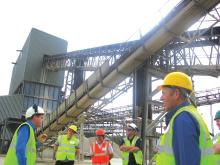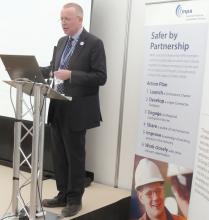
Reducing accidents is important but being able to demonstrate the improvement with accurate statistics is also essential
Health and safety initiatives in European quarries have helped to significantly drive down the rate of accidents in the industry over the last decade. But it is only possible to spot this downward trend because of improved record keeping that has allowed data from different companies to be compared.
"We started collecting data in a more focused way in 1999 in response to our members wanting to make health and safety a number one priority," said
"Twenty, 30 or 40 years ago the quarrying industry had a safety record that it could not be proud of and it was a real challenge to turn this around. The UK's
"We have seen an 83% drop in reportable accidents between 1999 and 2009 for direct employees," said Isles. "This is a real achievement but we cannot be complacent and we need to sustain this downward trend. Tracking statistics and improving the quality of the data we collect is essential to make sure this is achieved and to identify areas where further improvement is possible." To do this the
"Internationally, lost time injury rates are more commonly used and will allow data to be compared across Europe. Of course different measures are used by different industries and in different countries so there will never be total harmony between the data but it is converging." The UEPG is encouraging its members to adopt a system based on the
According to Isles, comparison of safety statistics can be greatly motivating for companies. "Internally we produce league tables based on safety information provided by our members and it stimulates competition between companies in the league table. The people at the wrong end of the tables are not happy to be there," he said. "These figures force people to question safety practices and challenge procedures." Understanding their influence on these figures can also be very motivating for employees and many companies display their safety records in reception areas on site. "We need feedback from the ground of potential problems and near misses to achieve the continual improvement," said Isles. "Statistics help to concentrate people's minds on improvement.
"This is a rough, tough industry and involves arduous work but accidents should be unacceptable and there is a real drive from company CEOs that zero harm is the aim."










